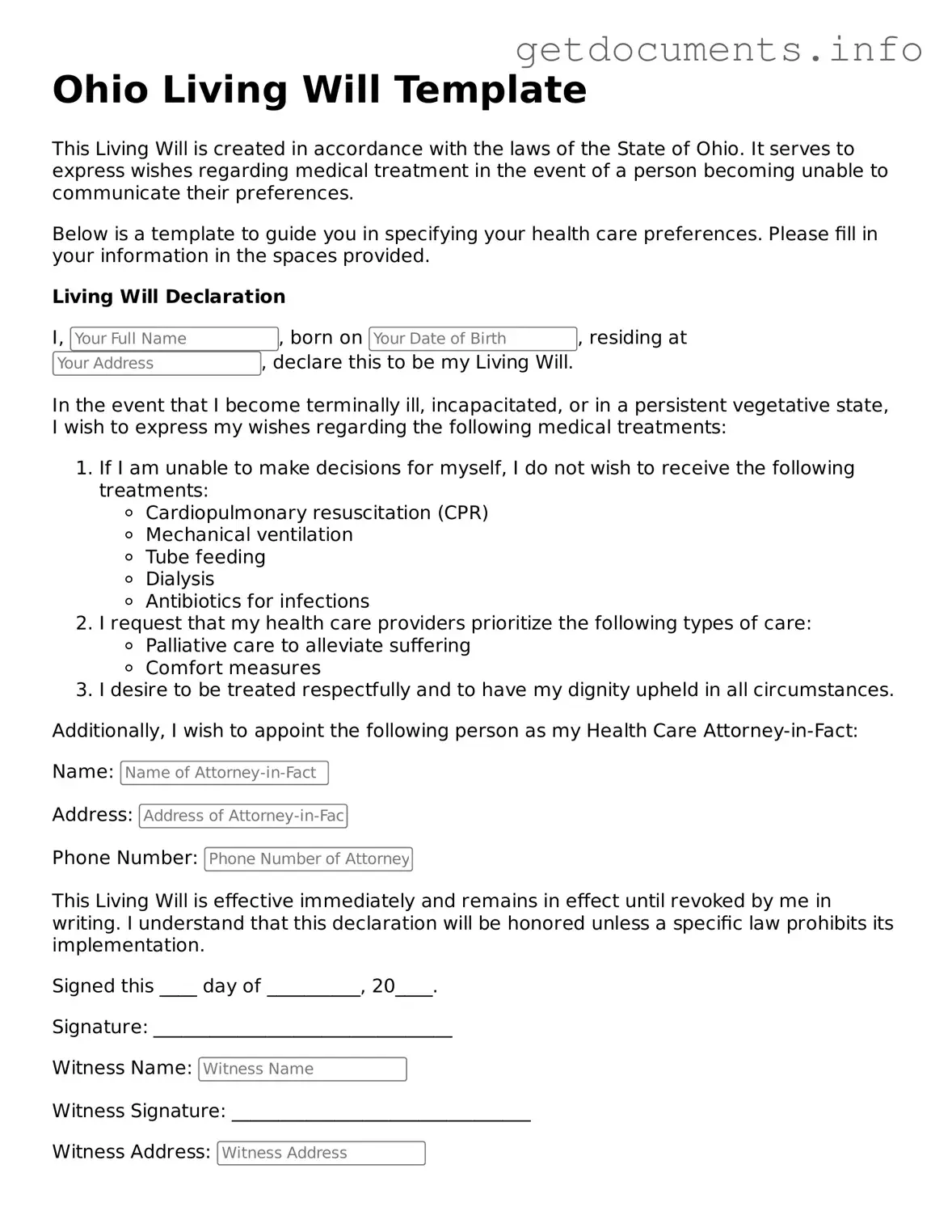Free Living Will Template for Ohio
A Living Will is a legal document that outlines an individual's preferences for medical treatment in the event they become unable to communicate their wishes. This form is crucial for ensuring that healthcare providers and loved ones understand and respect your choices regarding end-of-life care. To take control of your healthcare decisions, consider filling out the Ohio Living Will form by clicking the button below.
Access Living Will Editor
